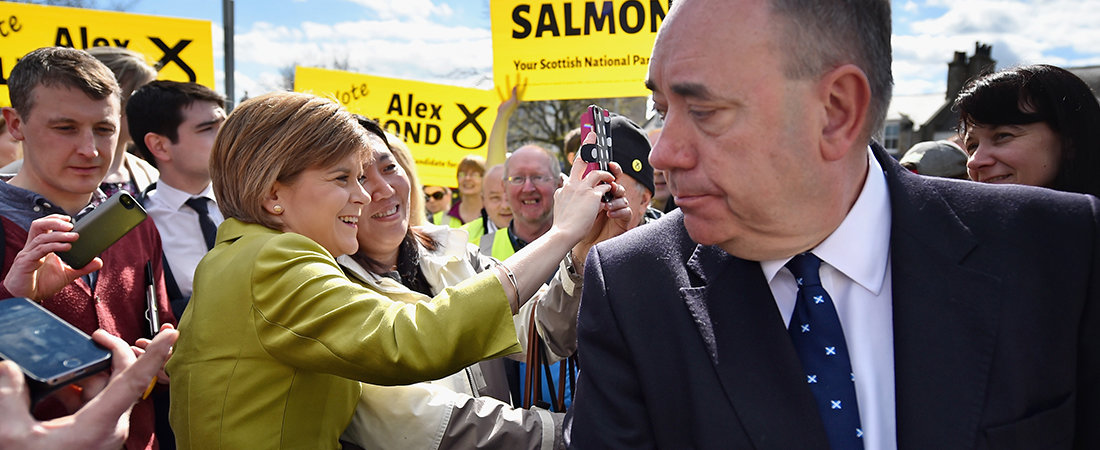As a political and personal attack, it was not subtle.
“Everybody knew Alex Salmond was a gambler because he’s never made any secret of it, he backs the horses on a nearly daily basis,” Nicola Sturgeon told the BBC on April 1.
Voters in Scotland might be forgiven for thinking “fool me once” given the date and the fact that Salmond’s high stakes approach to politics was one of the main driving forces behind the country coming to within 200,000 votes of independence.
At that time, he and Sturgeon were a well-oiled machine, swotting aside opponents with ease, but a lot of water has passed under the bridge since the 2014 referendum.
The pair have not spoken in nearly three years. Sturgeon this week told journalists she would not be picking up the phone to Salmond after May’s Holyrood election and that she didn’t expect her mobile to light up with his number either.
That is despite the fact the former First Minister could hold significant electoral power over his successor if his plans come to fruition.
The most important question, which will define the next five years of British, not just Scottish politics, is whether the SNP can return a parliamentary majority that would recreate the conditions that led to David Cameron agreeing to the first referendum.
Currently there is a pro-independence majority with the Scottish Greens tipping the balance. Salmond’s plan is to add Alba MSPs and create a “supermajority” that he says Boris Johnson will find impossible to ignore.
The plan relies on playing Holyrood’s voting system. As well as a traditional first-past-the-post constituency ballot, there is a regional list vote which is an attempt to make the Scottish parliament more proportionally representative.
Every constituency seat a party wins makes it more difficult for them to return a regional MSP. The SNP struck the sweet spot in 2011 but in 2016, despite winning more constituencies, it missed out on total control as the system did its job.
Salmond wants nationalists to vote SNP in constituencies and Alba on the list to prevent any “wasted votes” for his former party. The risk is he takes enough support from Sturgeon to deprive her of seats but not enough to counteract that with his own gains.
Polling is showing a mixed picture. Most are still predicting an SNP majority but a Savanta Comres survey for The Scotsman this week predicted that the “Alba effect” would in fact deny Sturgeon a majority, but not return any MSPs from Salmond’s party.
Generally, around 5 or 6 per cent is required to return a seat on a regional list and Alba is currently polling between 2 and 6 per cent with Salmond’s personal ratings consistently rock bottom. He is less popular than Johnson in Scotland.
This is all within the margin of error and small shifts will make a big difference, especially when you consider an Ipsos Mori poll for STV found that 32 per cent of people say they might change their mind about which party they will cast their list vote for.
Salmond’s manoeuvres are being paid attention to in Downing Street. A minority SNP government being pushed – or propped up – by Alba may well lead to UK ministers rejecting the legitimacy of Sturgeon’s mandate for another referendum. That strategy will be much tougher if there is an SNP majority.
Senior figures in the nationalist movement, loyal to Sturgeon but who know Salmond well, say he will have closely studied the form of the polls and would not have launched his new venture if he did not think there was a significant chance of success.
Whether the gambling man of Scottish politics falls or surges at the final furlong will go a long way to determining the future of the country.

